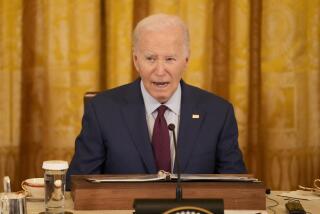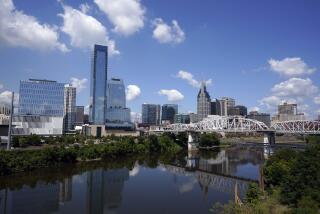Editorial: Holding for-profit colleges accountable
For-profit colleges that wildly exaggerate their graduates’ success and talk prospective attendees into taking on extraordinary debt are not only harming their students but costing taxpayers billions of dollars on wasted Pell grants and defaulted federal student loans. After an earlier court defeat, the Obama administration is trying again to set rules to stop schools from overpromising to attract students. This time, the rules should stick.
The administration has spent years looking for ways to crack down on the bad actors within the for-profit college industry, which accounts for just 13% of college enrollment but almost half of all federal student loan defaults. The misrepresentations made to prospective students have been widely documented; culinary schools, for instance, have been known to count janitors at fast-food restaurants as graduates who have secured work in their chosen field. But so far, aggressive lobbying and legal complaints by the schools have stymied reform.
The new rules, announced this month, don’t only target for-profit colleges but apply to any non-degree program that promotes itself as a gateway to “gainful employment.” Applicants to such schools would not qualify for federal grants and loans if the default rate for the program they plan to attend is more than 30% and if loan payments regularly exceed a certain percentage of graduates’ incomes. It is expected that the rules will overwhelmingly affect for-profit colleges.
Three years ago, a judge threw out part of a previous proposal, though he agreed that the federal government had the authority to impose rules on which programs would qualify for federal student aid.
The for-profit college industry will almost certainly fight this proposal as vigorously as it has previous ones. The colleges contribute heavily to members of Congress.
Some colleges have tightened practices to a degree, but a Government Accountability Office investigation studied 15 for-profit colleges in 2010 and found that all of them engaged in at least some deceptive practices, by inflating graduation rates, giving misleading information about the cost of their programs, encouraging falsification of loan documents or exaggerating salaries for certain jobs.
The administration isn’t trying to close the schools but rather to make the best use of federal student aid. About $26 billion in student loans and $10 billion in federal Pell grants go to students in for-profit college programs each year, with too little to show for it in terms of employed graduates and repaid loans. Only the college industry profits from this publicly funded scenario.
More to Read
A cure for the common opinion
Get thought-provoking perspectives with our weekly newsletter.
You may occasionally receive promotional content from the Los Angeles Times.






